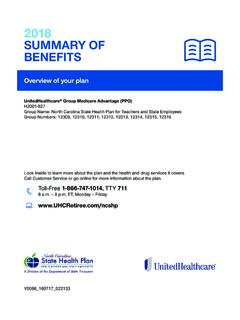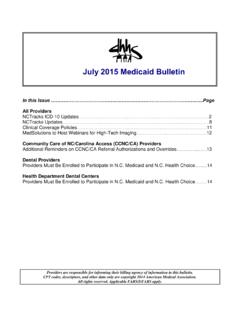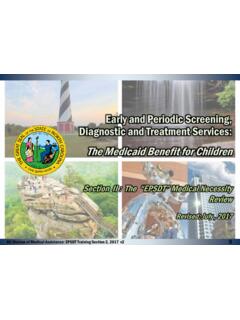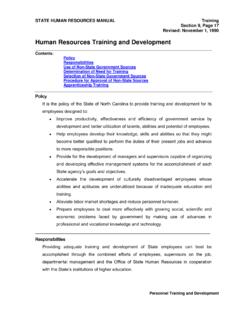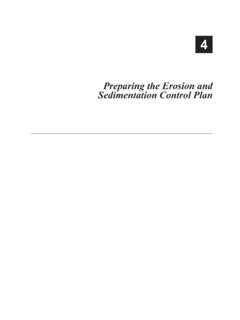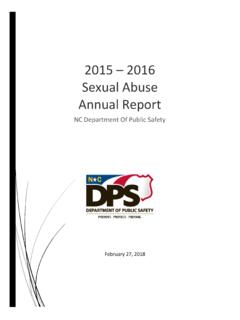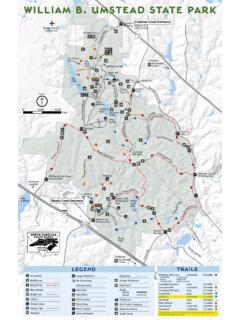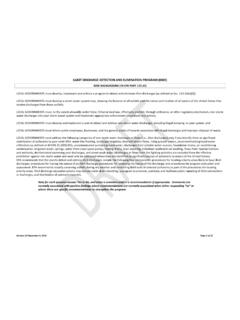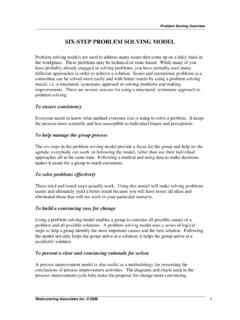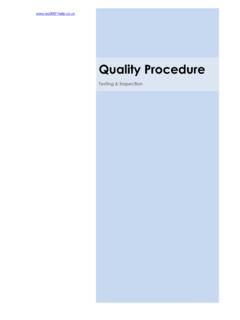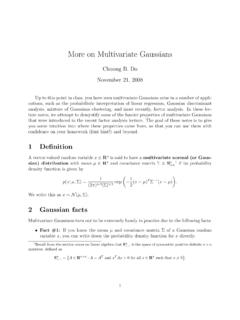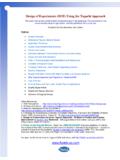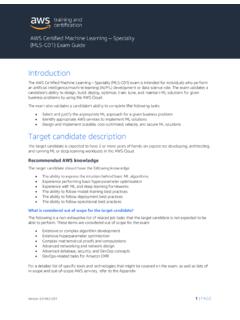Transcription of 7th Grade Mathematics Unpacked Contents - NC
1 7th grade Mathematics Unpacked Contents For the new Standard Course of Study that will be effective in all North Carolina schools in the 2018-19 School Year. This document is designed to help North Carolina educators teach the 7th grade Mathematics Standard Course of Study. NCDPI staff are continually updating and improving these tools to better serve teachers and districts. What is the purpose of this document? The purpose of this document is to increase student achievement by ensuring educators understand the expectations of the new standards.
2 This document may also be used to facilitate discussion among teachers and curriculum staff and to encourage coherence in the sequence, pacing, and units of study for Grade -level curricula. This document, along with on-going professional development, is one of many resources used to understand and teach the NC SCOS. What is in the document? This document includes a detailed clarification of each standard in the Grade level along with a sample of questions or directions that may be used during the instructional sequence to determine whether students are meeting the learning objective outlined by the standard.
3 These items are included to support classroom instruction and are not intended to reflect summative assessment items. The examples included may not fully address the scope of the standard. The document also includes a table of Contents of the standards organized by domain with hyperlinks to assist in navigating the electronic version of this instructional support tool. How do I send Feedback? Please send feedback to us at and we will use your input to refine our unpacking of the standards. Thank You! Just want the standards alone?
4 You can find the standards alone at North Carolina 7th grade Standards Standards for Mathematical Practice Ratio and Proportional Expressions &. The Number System Geometry Statistics & Probability Relationships Equations Analyze proportional Apply and extend previous Use properties of Draw, construct, and Use random sampling to relationships and use them understandings of operations to generate describe geometrical draw inferences about a to solve real-world and operations with fractions to equivalent expressions. figures and describe the population.
5 Mathematical problems. add, subtract, multiply, and relationships between divide rational numbers. them. Solve real-world and Make informal inferences mathematical problems to compare two using numerical and Solve real-world and populations. algebraic expressions, mathematical problems equations, and involving angle measure, inequalities. area, surface area, and volume. Investigate chance processes and develop, use, and evaluate probability models. NC Department of Public Instruction 2 7th grade Unpacking Document Rev. June 2018.
6 Standards for Mathematical Practice Practice Explanations and Examples 1. Make sense of problems In Grade 7, students solve problems involving ratios and rates and discuss how they solved the problems. Students solve real and persevere in solving world problems through the application of algebraic and geometric concepts. Students seek the meaning of a problem and look them. for efficient ways to represent and solve it. They may check their thinking by asking themselves, What is the most efficient way to solve the problem?
7 , Does this make sense? , and Can I solve the problem in a different way? . 2. Reason abstractly and In Grade 7, students represent a wide variety of real world contexts through the use of real numbers and variables in quantitatively. mathematical expressions, equations, and inequalities. Students contextualize to understand the meaning of the number or variable as related to the problem and decontextualize to manipulate symbolic representations by applying properties of operations. 3. Construct viable arguments In Grade 7, students construct arguments using verbal or written explanations accompanied by expressions, equations, and critique the reasoning of inequalities, models, and graphs, tables, and other data displays ( box plots, dot plots, histograms, etc.)
8 The students others. further refine their mathematical communication skills through mathematical discussions in which they critically evaluate their own thinking and the thinking of other students. They pose questions like How did you get that? , Why is that true? , Does that always work? . They explain their thinking to others and respond to others' thinking. 4. Model with Mathematics . In Grade 7, students model problem situations symbolically, graphically, tabularly, and contextually. Students form expressions, equations, or inequalities from real world contexts and connect symbolic and graphical representations.
9 Students explore covariance and represent two quantities simultaneously. They use measures of center and variability and data displays ( box plots and histograms) to draw inferences, make comparisons and formulate predictions. Students use experiments or simulations to generate data sets and create probability models. Students need many opportunities to connect and explain the connections between the different representations. They should be able to use all of these representations as appropriate to any problem's context.
10 5. Use appropriate tools Students consider available tools (including estimation and technology) when solving a mathematical problem and decide when strategically. certain tools might be helpful. For instance, students in Grade 7 may decide to represent similar data sets using dot plots with the same scale to visually compare the center and variability of the data. Students might use physical objects or applets to generate probability data and use graphing calculators or spreadsheets to manage and represent data in different forms.
